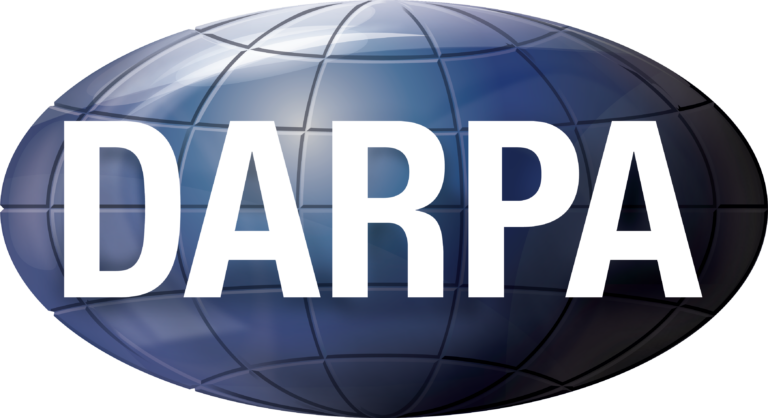The second triangle: the Descending Triangle
Read MoreHow DARPA is funding for a new age of computer
A breakthrough in quantum computing can change the market — and the world.

Quantum is a frontier that is so grand, not because of its complexity — well, partly, but put it like this, it is a field that slammed Einstein’s conviction down to the ground. A frontier that managed to tell off Albert Einstein himself.
“God does not play dice with the Universe,” or so Einstein thought.
What was meant by his quote above refers to his conviction over the belief that the universe is governed by a certain outcome — that everything that happened is predetermined, where if we manage to dissect into each atomic construct of beings, we are able to tell the past, the present, and the future of the universe. Simply, the butterfly effect.
To project it in a very simplistic manner, if you’re having a bratwurst for lunch today, it is predetermined. Perhaps when you unconsciously walked by a man eating one by the subway yesterday, where that man was brought there because he has an urgent meeting to catch downtown, where that meeting was arranged impromptu because the manager’s kid had a recital he almost forgot… and the sequences go on and on, a chain of events that allegedly can be traced back to the big bang itself.
Quantum, however, managed to prove that wrong (at least as of now) — that the fate of universe lies in uncertainty. In every sequence of events, lies a probabilistic nature to it. To answer Einstein’s quote above — perhaps God is playing dice with the universe.
How is it related to DARPA?

DARPA, or the Defense Advanced Research Projects Agency, is an agency of the United States Department of Defense responsible for the development of emerging technologies for military use. DARPA was established in 1958 in response to the Soviet Union’s launch of the first artificial satellite, Sputnik, and it operates as a research and development organization with a focus on high-risk, high-reward projects.
Why would DARPA fund quantum computing developments?
Well, this is where things get interesting. Quantum computers are important for a few purposes:
Strategic Technological Advantage: Quantum computing has the capability to solve certain problems exponentially faster than classical computers. This includes solving complex optimization problems, simulating quantum systems, and factoring large numbers.
If the U.S. military can harness the power of quantum computing, it could gain a significant technological advantage in various domains, including intelligence, logistics, and strategic planning. Imagine the power to simulate the whole world, or galaxy, or even universe! That might not be very near yet, but it’s always nearer than we thought.
Advanced Computing for Defense Applications: Quantum computers have the potential to perform computations that are practically infeasible for classical computers. This could lead to advancements in simulations, modeling, and data analysis, allowing for more accurate predictions and strategic decision-making in defense applications.
DARPA is interested in exploring how quantum computing could enhance the capabilities of military systems.
National Security: Quantum computing has the potential to revolutionize cryptography and code-breaking. If quantum computers become practical, they could potentially break widely used cryptographic protocols, posing a threat to the security of communication systems, financial transactions, and sensitive data.
This is the most interesting part of it all. Imagine, all the encryptions that we are currently using in our messaging apps, when we conduct online transactions, when we browse the internet — all of that becomes obsolete!
A little bit on how quantum computer works

Quantum computers operate based on the principles of quantum mechanics, a branch of physics that describes the behavior of matter and energy at the smallest scales, such as atoms and subatomic particles.
Unlike classical computers, which use bits to represent either a 0 or a 1, quantum computers use quantum bits, or qubits, which can exist in multiple states simultaneously due to a quantum phenomenon known as superposition. This allows quantum computers to perform certain types of calculations much more efficiently than classical computers.
So, instead of either being a 1 or a 0, quantum computer can be 1 and 0, or 2, or 3, or 5.
Here are the key principles of how quantum computers work:
Superposition: Qubits can exist in multiple states at the same time, thanks to superposition. While classical bits can be either a 0 or a 1, a qubit can be in a state representing 0, 1, or any combination of both.
Entanglement: Qubits can be entangled, meaning the state of one qubit is directly related to the state of another, regardless of the physical distance between them. Changes to one entangled qubit instantaneously affect the other, providing a form of correlation that can be exploited for quantum computations.
Quantum Gates: Quantum computers use quantum gates to perform operations on qubits. These gates manipulate the quantum states of qubits, allowing for the creation of quantum circuits that perform specific computations.
Quantum Parallelism: Due to superposition, quantum computers can process a large number of possibilities simultaneously. This parallelism enables quantum computers to solve certain problems exponentially faster than classical computers.
However, we are yet to harness its full capabilities.
Quantum computers are perhaps so good that it’s too good to be true (yet), because it comes with a few functional limitations:
Error Correction: Quantum computers are susceptible to errors due to various factors, such as decoherence, imperfect gate operations, and environmental noise. Developing effective error-correction mechanisms for quantum computers is a complex task and is crucial for reliable quantum computation.
Limited Qubit Lifetimes: Qubits have a finite lifetime before they lose their quantum coherence. Extending qubit lifetimes is essential for sustaining computations over longer periods, and researchers are actively working on improving qubit stability.
Qubit Interactions: Achieving and controlling entanglement between qubits, especially as the number of qubits increases, is challenging. Ensuring reliable and controllable qubit interactions is crucial for building large-scale quantum computers.
Quantum Gates and Connectivity: Implementing precise and fault-tolerant quantum gates, as well as ensuring efficient connectivity between qubits, is a complex engineering challenge. The physical architecture of quantum processors plays a critical role in addressing these issues.
What’s the good news?

In a significant development under DARPA’s ONISQ program, a research team from Harvard, with support from MIT, QuEra Computing, Caltech, and Princeton, has achieved a groundbreaking milestone by creating the first-ever quantum circuit containing logical qubits. This achievement, focusing on Rydberg qubits, marks a crucial advancement that could expedite the progress of fault-tolerant quantum computing and reshape the conceptual framework for designing quantum processors. Simply saying, they have a way around the error issue now, which is a huge thing.
The team utilized techniques to generate error-correcting logical qubits using arrays of “noisy” physical Rydberg qubits during their exploration of Rydberg qubit potential. Logical qubits, which are resilient to errors, address a significant challenge in realizing fault-tolerant quantum computing. In contrast to error-prone physical qubits, logical qubits maintain their quantum state through error correction, making them valuable for solving complex problems.
Harvard has successfully constructed quantum circuits with approximately 48 Rydberg logical qubits in their laboratory, representing the largest number of logical qubits achieved to date. The scalability of logical qubits is expected to be relatively straightforward due to the nature of Rydberg qubits and their manipulability.
While solving significant quantum computing problems may require greater than 48 logical qubits, the breakthrough in Rydberg logical qubits challenges the conventional belief that millions of physical qubits are necessary for developing a fault-tolerant quantum computer. With the potential for dynamically reconfigurable quantum circuits, it remains uncertain how many logical qubits are needed for specific problem-solving, but the requirement could be substantially fewer than initially anticipated.
TLDR; they managed to discover a fault tolerant way of doing it, which would bypass the initial requirement that millions of qubits need to be used to achieve what they have now achieved.
Why is it a big thing?
It’s already a lengthy article so we’ll make it simple on this one. The only reason that the whole encryption security system on the internet is still holding on is because to date, there is not yet a quantum computer that is truly capable of breaking the codes.
As far as our current cyber security framework is concerned, the only way that we can break through an encryption is by sifting through a massive amount of code and looking for an answer. If you’ve ever watched that movie on Alan Turing, the man who cracked Nazi’s code back in WWII, he and his team had to sift through a complex code made by the Nazis back then, and their luck was on the fact that all communications started with “Heil Hitler”.
Nowadays, if one is to try and crack an encryption using such ‘brute force’, they’d need almost a million years to try it one by one. Well, guess who can process a million years’ worth of data in just a few hours or days? Quantum computers!
So, if any country can finally operate a quantum computer in its optimal state, it’s about time to say goodbye to cyber security as we know it.
Is it the end of privacy?

Thankfully, not yet. There is a glimmer of hope. As we are speaking, there are anti-quantum encryption mechanisms being developed by a few companies in the world, but in this article, we’ll just look into the ones in the US.
MagiQ Technologies
The reason why we put this company first is because from all of five companies we listed, which are all privately held, this one stands out the most in terms of where the money is coming from.
Per Pitchbook, among the investors in this company is The Department of the Navy, US Air Force, United States Army, NASA, and the US Department of Health and Human Services. If there’s anything that we can conclude from this — they’re working on something big.
Qabacus
This company is founded in 2019, privately owned, and by far is one of the youngest faces in the game.
Qrypt
Qrypt is founded slightly earlier than the previous one, which is in 2017. It currently runs on 50 staffs, and it is private. Its main goal is to provide service against quantum computing cybersecurity threats.
Quantum Xchange
Founded in 2018, Quantum Xchange focuses on preventing theft, particularly from encryption keys cracks. It is currently being funded by venture capitals, with names such as New Technology Ventures, Space Capital, and Venture Access Group as a few of their minority shareholders.
QuSecure
Another new name in the block, QuSecure was founded in 2019, and one of its source of fund is through accelerators/incubators programme, with shareholders such as Band of Angels, Plug and Play Tech Center, Techstars, and EvoNexus.
How are these companies important?
We’ve written long enough to bore you, so here’s the thing — once a well-running quantum computer is achieved, cybersecurity threats will move into the next frontier — and who will the banks, tech companies, government agencies, and anyone who is exposed to cyber threats look for? The people who can stop quantum attacks, such as the ones we mentioned.
Bottom Line
In conclusion, the field of quantum computing is not just a technological frontier; it represents a paradigm shift in our understanding of the universe’s fundamental principles. DARPA’s investment in quantum computing is driven by the potential strategic advantage it offers to the U.S. military, particularly in solving complex problems exponentially faster than classical computers.
However, the revolutionary capabilities of quantum computers come with challenges such as error correction, limited qubit lifetimes, and the need for precise quantum gates and connectivity. Recent breakthroughs, such as the creation of logical qubits by a Harvard research team under DARPA’s ONISQ program, signify significant progress toward fault-tolerant quantum computing.
This breakthrough is a massive leap forward for mankind. From being able to explore the depth of quantum physics, simulate atomic occurrences, to the point of breaking codes that would otherwise take millions of years to decrypt, quantum computer comes with a bountiful range of opportunities as well as threats. Where would this lead us? Perhaps a quantum computer can answer that.
The key takeaways/market update is a series by AxeHedge, which serves as an initiative to bring compact and informative In/Visible Talks recaps/takeaways on leading brands and investment events happening around the globe.
Do keep an eye out for our posts by subscribing to our channel and social media.
None of the material above or on our website is to be construed as a solicitation, recommendation or offer to buy or sell any security, financial product or instrument. Investors should carefully consider if the security and/or product is suitable for them in view of their entire investment portfolio. All investing involves risks, including the possible loss of money invested, and past performance does not guarantee future performance.
Trading Dow Pattern the Triangle Pattern (Part 1)
The first triangle: the Ascending Triangle
Read MoreFunds: Equity Funds (Part 3)
How to choose between equity funds based on companies’ earnings...
Read More



